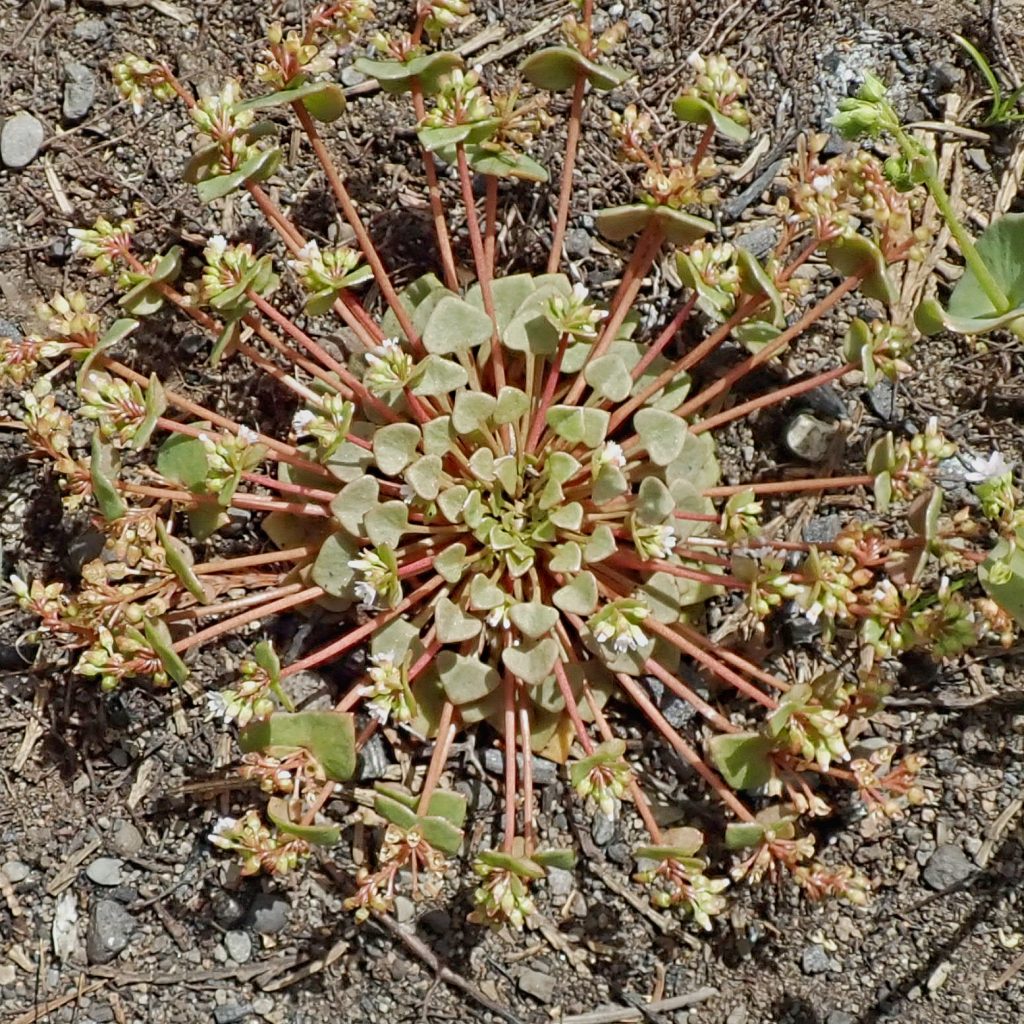
Because they are all members of the Claytonia perfoliata polyploidy pillar complex, I am writing linked posts about C. parviflora, C. rubra, and C. perfoliata, and information common to all three can be found in the post about C. perfoliata. I was fortunate enough to find each one of these species side by side with one of it’s kin, so I have direct comparison photos in each profile.
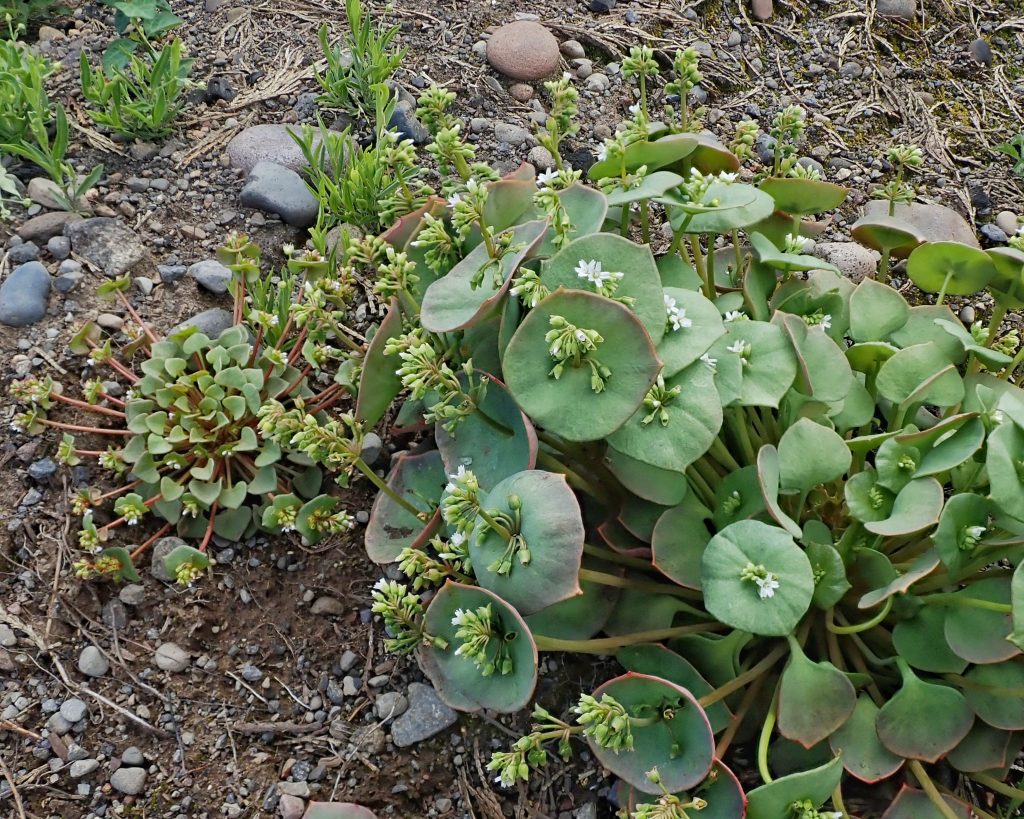
Hopefully this will help clarify identification of our superficially similar Claytonia with fused cauline (stem) leaves. The first thing to look for is the size and shape of the basal leaves (there is a good, if overly simplified, glossary of leaf shapes here). In C. perfoliata they are fairly large (10-70mm long by 5-60mm wide), rhombic to deltoid or reniform, with a pointed tip. The basal leaves of C. rubra are small (5-15 mm long by 5-10mm wide) and ovate to spatulate or trullate, with an obtuse apex. And the basal leaves of C. parviflora are long and narrow (up to 6” long by 5-10mm wide) and linear in shape.
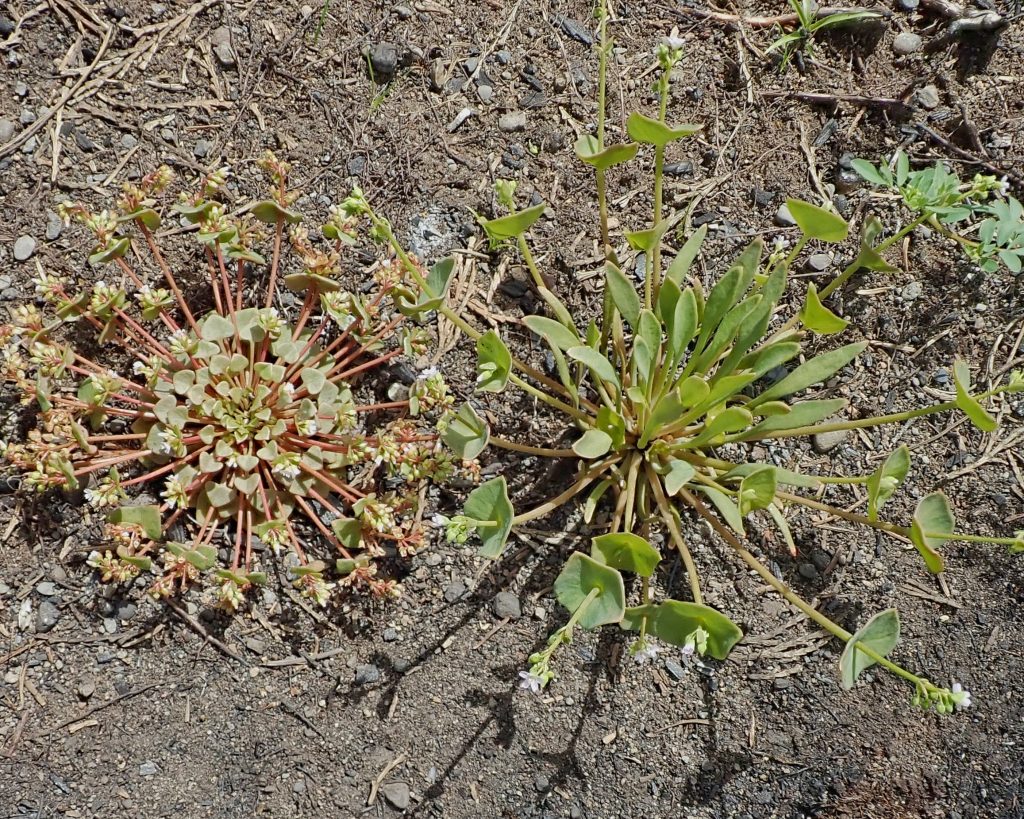
There are two characteristics one can use to distinguish between a small C. perfoliata and a large C. rubra. The stems of the basal leaves of C. perfoliata are suberect to erect, and the plants are mostly green, with only a weak reddish tinge. The stems of the basal leaves of C. rubra are flattened to suberect, and usually have red pigmentation.
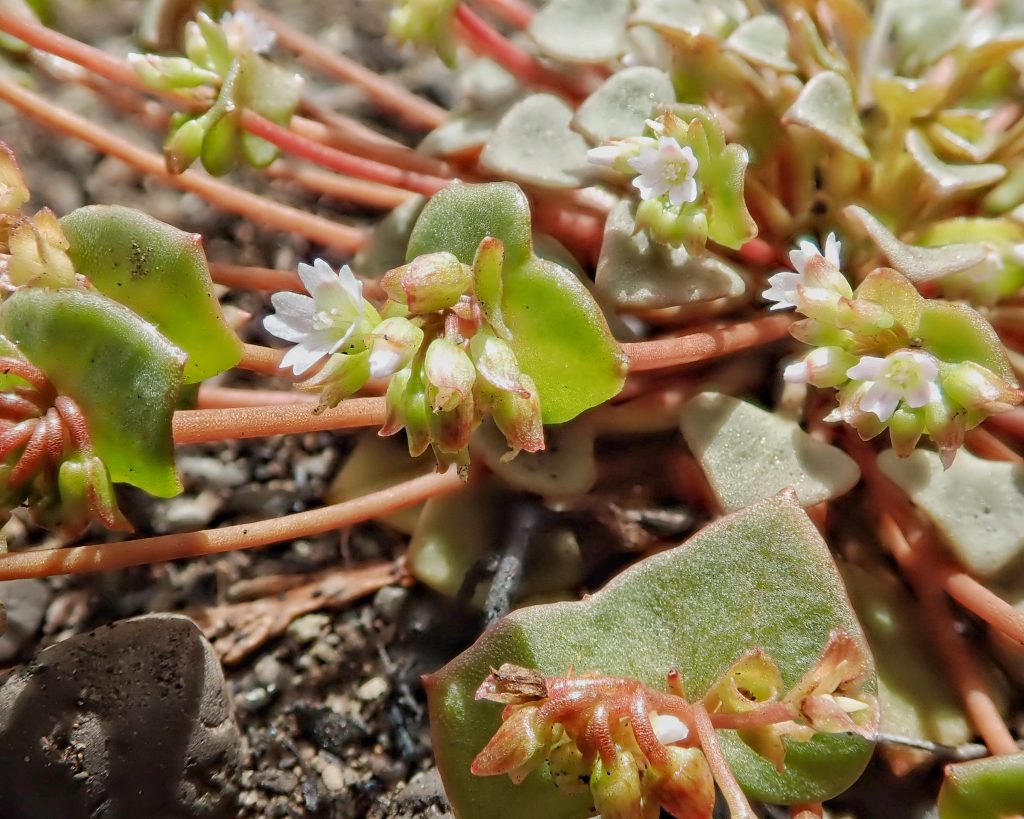
Description-Annual; grows as a small, flattened, sprawling form from a basal rosette of fairly small (5-15mm long by 5-10mm wide) leaves, ovate to spatulate or trullate, with an obtuse apex; single pair of opposite, usually fused, stem leaves; inflorescence short, and appears to grow straight from the leaf; flowers small, light pink to white.
Similar species-See C. perfoliata and C. parviflora
Habitat– Moister parts of drier conifer forests and shrub lands, in mineral soils, fallow and disturbed ground.
Range-Western North America; region wide in appropriate habitat.
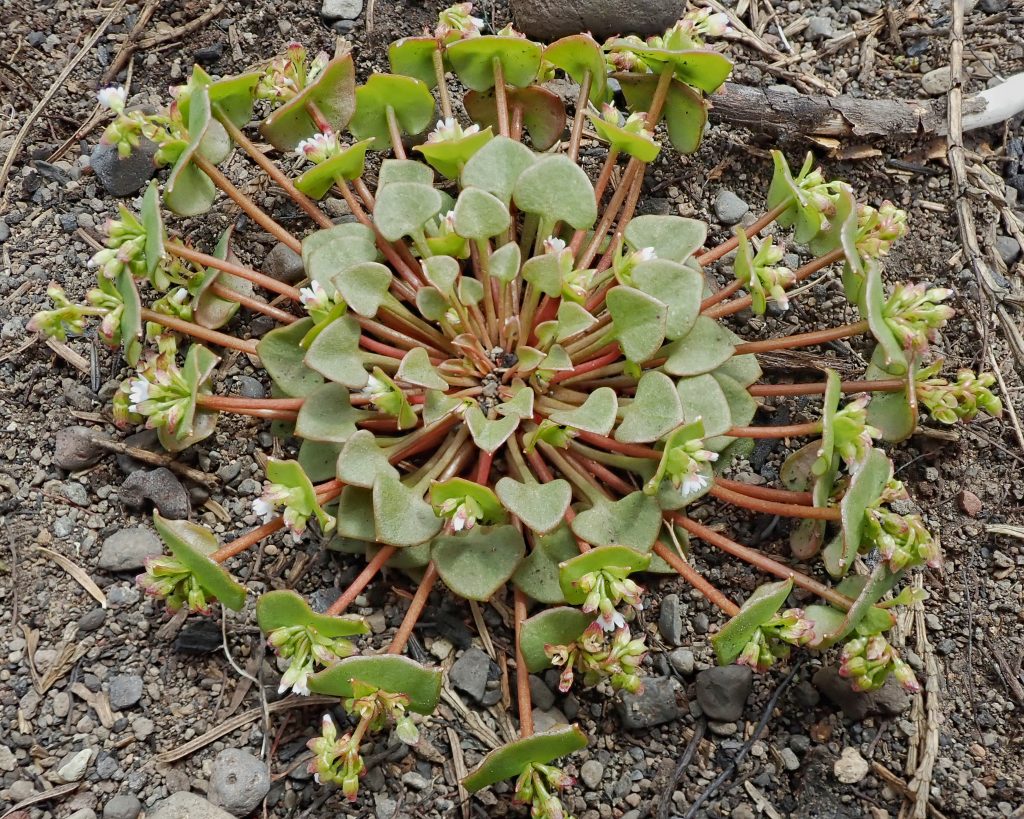
Reproductive timing-Blooms February to July
Eaten by-Larval host for the moths Annaphila diva, A. arvalis, and Enchoria lacteata ; valuable early season nectar and pollen source for various pollinators; Gastropoda and most grazing animals feed on these plants.
Etymology of names–Claytonia honors John Clayton (1694-1773), a lawyer and botanist in colonial Virginia. The specific epithet rubra is from the Latin for red, and refers to the red pigmentation of the basal leaves.
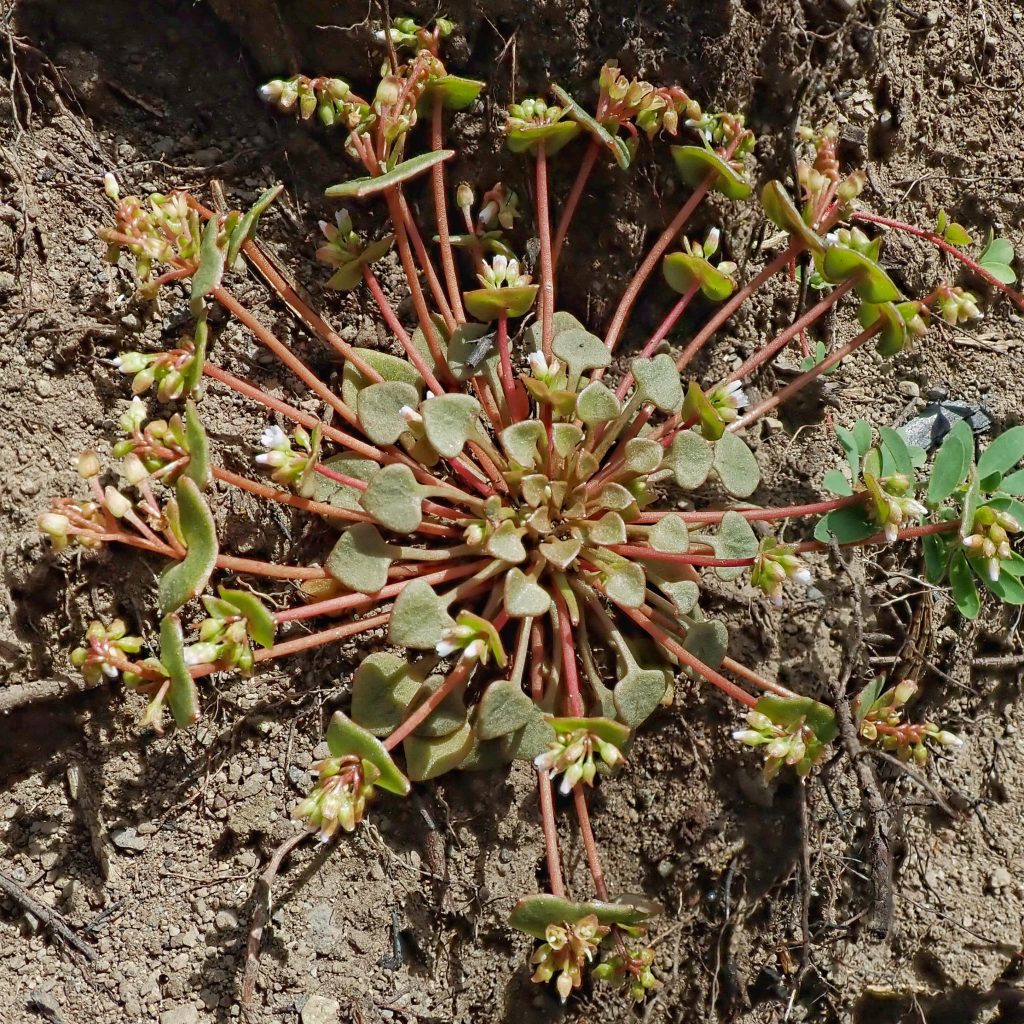
http://www.efloras.org/florataxon.aspx?flora_id=1&taxon_id=242415750
https://linnet.geog.ubc.ca/Atlas/Atlas.aspx?sciname=Claytonia+rubra
https://biology.burke.washington.edu/herbarium/imagecollection/taxon.php?Taxon=Claytonia%20rubra
https://en.m.wikipedia.org/wiki/Glossary_of_leaf_morphology
https://www.jstor.org/stable/2418301
John Clayton herbarium | Natural History Museum
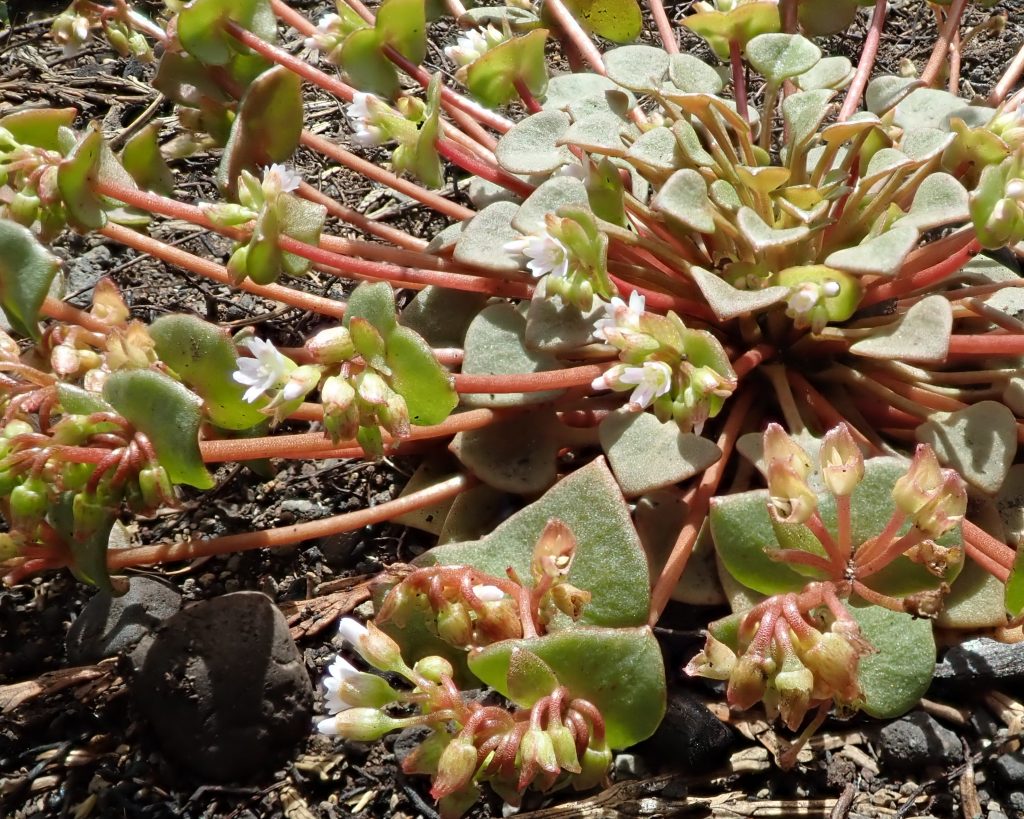
Very useful, just wish I had known this a couple days ago when I was asking myself whether the two were the same species or not
Thanks Lynn! One of my goals here is to create the site I wish I had found 10 years ago.
this is awesome! thank you.
where i live (northwest montana), it seems that rubra blooms quite a bit sooner than perfoliata and parviflora. i’m wondering if any others have noticed this?
That’s an interesting observation, Bob!